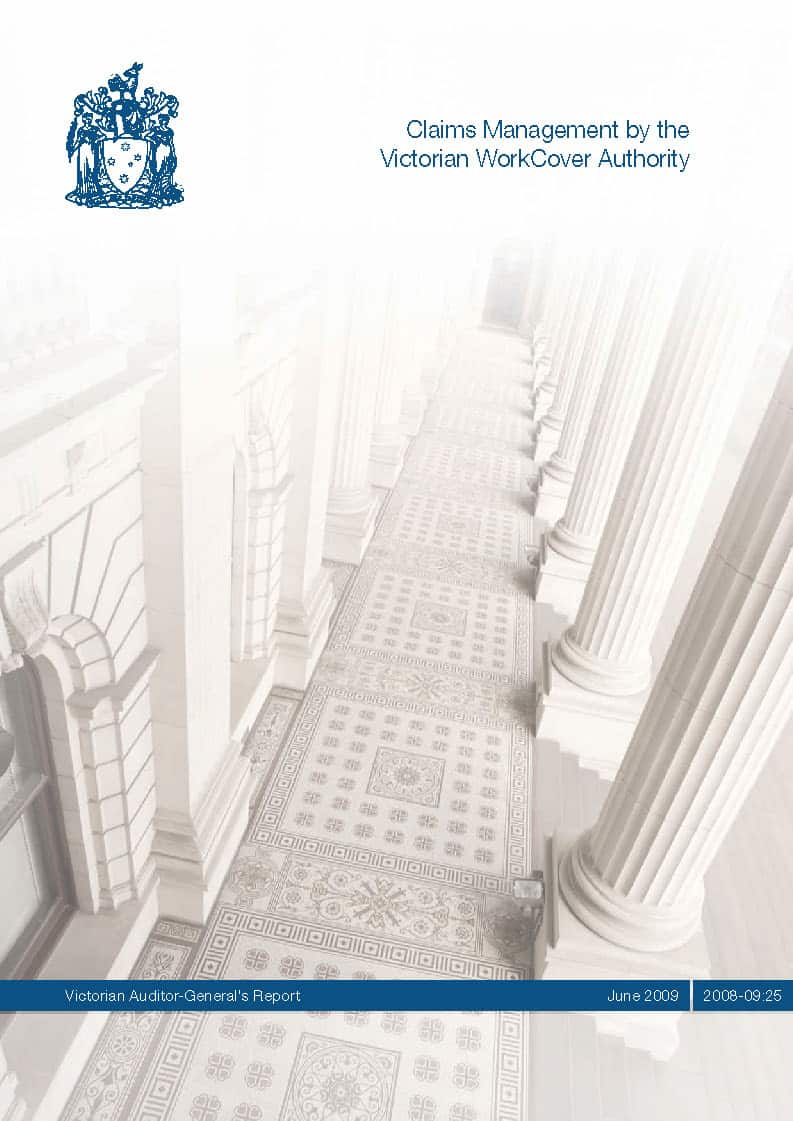 On 3 June 2009, the Victorian Auditor-General released the audit report, CLAIMS MANAGEMENT BY THE VICTORIAN WORKCOVER AUTHORITY. The objective of the audit was to assess the effectiveness and efficiency of VWA’s claims management.
On 3 June 2009, the Victorian Auditor-General released the audit report, CLAIMS MANAGEMENT BY THE VICTORIAN WORKCOVER AUTHORITY. The objective of the audit was to assess the effectiveness and efficiency of VWA’s claims management.
The report found that the current claims management model
“has not substantially improved RTW [return-to-work] outcomes, or the effectiveness of agents’ case management practices”
Although the report notes that the system has not deteriorated.
The report also says
“Agents’ case management practices, on average, were considered generally adequate, however, there is substantial scope for improving agents’ performance.”
“Adequate” is not a ringing endorsement of the system and the workers’ compensation agents should pay particular attention to criticism of their performance.
Safety managers and professionals have been trying to incorporate psychosocial hazards into their safety management processes but it seems that agents are having similar problems:
“Agents did not systematically consider psychosocial barriers to RTW such as attitudes toward recovery, stress, anxiety, workplace issues, substance abuse, and family matters, when assessing the injured worker’s status, needs and risks to recovery. In most cases assessments were narrowly focused on the physical injury and its impact.”
The report notes that many issues raised are already being addressed by the Victorian WorkCover Authority.
Almost the only statements made on the workers’ compensation scheme by the State Ministers over the last decade have related to premium fluctuations, how the business costs of the system are being controlled or unavoidable. However it seems now that the system has only been cruising, but not improving, or keeping up with the contemporary workplace hazards and employee needs.
The white collar public service, in particular, has a high incidence of stress-related claims. The reality of the hazard has been acknowledged through preventative guidance notes from the OHS regulators and the general growth in the work/life balance movement. Yet in 2009, the workers’ compensation agents are criticised for giving this hazard insufficient attention.
Even when an audit report is politely critical, it remains critical and demands attention.

 Recently I wrote an article for
Recently I wrote an article for 